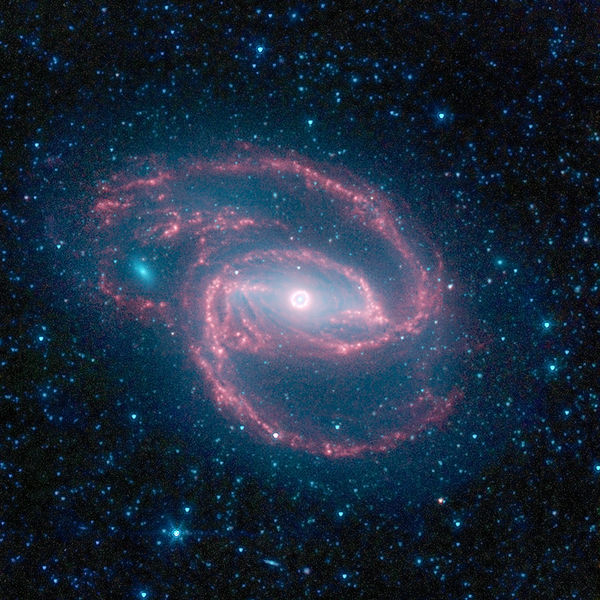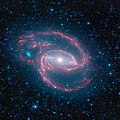Ficheiro:Coiled Galaxy.jpg
Aspeto

Dimensões desta antevisão: 600 × 600 píxeis. Outras resoluções: 240 × 240 píxeis | 480 × 480 píxeis | 768 × 768 píxeis | 1 024 × 1 024 píxeis | 2 056 × 2 056 píxeis.
Imagem numa resolução maior (2 056 × 2 056 píxeis, tamanho: 1,04 MB, tipo MIME: image/jpeg)
Histórico do ficheiro
Clique uma data e hora para ver o ficheiro tal como ele se encontrava nessa altura.
| Data e hora | Miniatura | Dimensões | Utilizador | Comentário | |
|---|---|---|---|---|---|
| atual | 23h20min de 24 de maio de 2010 |  | 2 056 × 2 056 (1,04 MB) | Tryphon | Better quality, from http://www.spitzer.caltech.edu/Media/releases/ssc2009-14/ssc2009-14a.shtml (http://ipac.jpl.nasa.gov/media_images/ssc2009-14a1.jpg). |
| 13h29min de 11 de agosto de 2009 |  | 2 056 × 2 056 (457 kB) | TonyBallioni | {{Information |Description={{en|1=Original caption released with photo: NASA's Spitzer Space Telescope has imaged a wild creature of the dark -- a coiled galaxy with an eye-like object at its center.The 'eye' at the center of the galaxy is actually a mons |
Utilização local do ficheiro
A seguinte página usa este ficheiro:
Utilização global do ficheiro
As seguintes wikis usam este ficheiro:
- ar.wikipedia.org
- ast.wikipedia.org
- be-tarask.wikipedia.org
- cs.wikipedia.org
- cy.wikipedia.org
- de.wikipedia.org
- el.wikipedia.org
- en.wikipedia.org
- NGC 1097
- List of spiral galaxies
- Talk:NGC 1097
- Wikipedia:Featured pictures/Space/Looking out
- Wikipedia:Featured pictures thumbs/36
- Wikipedia:Featured picture candidates/November-2013
- Wikipedia:Featured picture candidates/File:Coiled Galaxy.jpg
- User talk:The Herald/Archive 4
- Wikipedia:Picture of the day/July 2015
- Template:POTD/2015-07-29
- User talk:The Herald/Archive 31
- Wikipedia:Main Page history/2015 July 29
- Wikipedia:Reference desk/Archives/Miscellaneous/2015 July 29
- es.wikipedia.org
- fa.wikipedia.org
- fr.wikipedia.org
- id.wikipedia.org
- it.wikipedia.org
- ja.wikipedia.org
- kk.wikipedia.org
- ko.wikipedia.org
- mk.wikipedia.org
- no.wikipedia.org
- pl.wikipedia.org
- pl.wikinews.org
- sk.wikipedia.org
Ver mais utilizações globais deste ficheiro.


